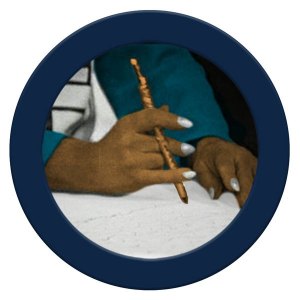During March 1963 ,Doctor Who was conceived by Canadian producer Sydney Newman, who appointed Verity Lambert, also the first female producer at the BBC, as the first producer on the show. It was supposed to bridge the gap between the teen music show Jukebox Jury and sports show Grandstand which had a general audience predominately of beefy, moustached middle-aged men. I think, more than 800 episodes and 295 stories (and 4 spinoffs) later, it is safe to say it exceeded its expectations. However, there is more to this show than meets the eye at first. Whereas most shows have clear cast names – one cast name in history has remained shrouded in mystique – what is the name of the lead title character of one of the biggest shows in history? Doctor who?
As a self-confessed child of the new series, until I started watching the classic series, the answer for me was clear-cut – the same answer most who grew up with the new series will give ; the main character of Doctor Who is called The Doctor. Right? Well, it is nowhere near as clear cut as it may seem on first glance.
William Hartnell was cast as ‘Doctor Who’ in the lead role. At this time, very little was known by the production team of how this character would develop, and who this character was. In fact, in earlier serials the character is suggested to be someone from the future, rather than an alien – an idea that first came to prominence in The Time Meddler, although the species would not be named until The War Games five years later, and his planet not until The Time Warrior ten years later.
Intriguingly, although Hartnell was cast as Doctor Who, he was mainly referred to as The Doctor within the show itself, bar some exceptions which we will cover later. This is probably where the confusion begins and continues to come from.
Following the success of the TV show, and with no recording function or physical media available in the 60s, the BBC began to commission Target novelisations of the classic series, which began in 1965. Interestingly, they refer to the character as ‘Doctor Who’ in the titles of the books, and as The Doctor in the stories themselves, consistent with the approach of the television series.
One story which breaks this trend was The War Machines which famously includes this piece of dialogue from the villain WOTAN: “Doctor Who is required. Bring him to us,” which is the only time ‘Doctor Who’ is used to refer to The Doctor until 2017’s World Enough And Time, in which it’s played for laughs. Although, ‘Doctor Who?’ (the question) is used for jokes in Series 7 and 10, and in Series 6 and 7 in the form of the main ongoing plot arc. However, following this the name Doctor Who is used as the title of the character in casting only for the next 4 years. That is, until Doctor Who and The Silurians.
The case of Doctor Who and The Silurians is interesting partly because it openly refers to the lead in the title, similar to the Target novelisation style (although ironically the target novelisation of this story was changed to Doctor Who and the Cave Monsters), but also because it was done by accident and by the time the production staff realised their error, it was too late to change. Also, contrary to popular belief, these episodes were not the first to include ‘Doctor Who’ in the title. That honour goes to part 5 of The Chase, The Death of Doctor Who, broadcast during Hartnell’s run. However, this was just a rookie blip and they returned to normality for the next 14 years.
Change happened on the 4th February 1982 when Castrovalva Part 1 aired on BBC1. This was Peter Davison’s first full episode in the title role and the first in which he was given lead billing, as he is credited second to Tom Baker in the credits for Logopolis Part 4. But, the interesting thing about this episode is that it was the first to credit the lead as ‘The Doctor’, rather than ‘Doctor Who’ as they had been credited in every previous serial. Furthermore, this was not a purposeful decision from the production team, but a personal request by Davison himself, as he idolised Troughton and saw Doctor Who as nothing more than the name of the show. Inspired by Davison’s request, this trend carried on through the rest of the classic era.
23 years (including 16 on a seemingly eternal hiatus) and a resurrection later, Doctor Who was revitalised and brought back onto the nation’s TV screens in 2005 and, although many expected incumbent Doctor Christopher Eccleston to take on the role of The Doctor, instead he was controversially credited as Doctor Who, something which was quickly rectified ahead of Series Two on new lead actor Tennant’s demand, mirroring Davison’s in 1980.
And the rest has remained as we know it today. Excepting the odd joke played for laughs, the lead of the show loved by so many has found some relative comfort in the format used for the last 14 years ; Doctor Who is the name of the show and The Doctor is the name of the character. Despite this, with a history as long and varied as Doctor Who has, and with as many fans of as many different ages, perhaps we should just decide that it is okay to be called more than one thing.







